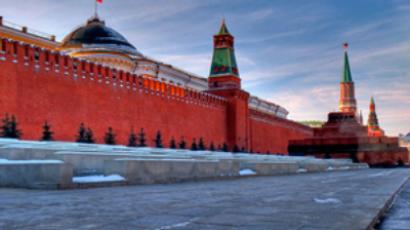Soviet repressions remembered
Remembering the fate of political prisoners and reminding of human rights are the aims of the memorial museum of political repressions Perm-36. The museum has held the 5th International forum “Pilorama-2009”.
As expected, questions about war and peace, prison and freedom were never far from attendees minds.
The Perm-36 museum, a former camp for political prisoners is, in a way, unique. It has kept some of the original wooden buildings of the Soviet dark times and managed to restore the camp's furnishings and feel to how they were back then.
The museum enjoys massive interest from both Russian and international audiences, and regularly holds joint international expo-projects. Original exhibits from Perm-36 have traveled to almost all major cities in the US.
“In 1972, this camp became a camp for political prisoners. They were transferred here from Mordovia, where the political camps were concentrated. They were kept in so-called high-security, and from 1980 an even tougher, maximum-security regime for prisoners. The security systems constructed here show how strong the government’s fear of dissidents was,” Leonid Obukhov, head of the scientific research group at the Perm-36 museum told RT.
There are few other places in the country telling the story of GULAG camps in the Soviet Union and showing how the political prisoners were kept in them.
“Many innovations worked out in the Internal Ministry’s institutions were tested in the camps for political prisoners, and particularly here. In penal colonies the security systems were not so strict,” Leonid Obukhov says.
The festival received the name “Pilorama” translated verbatim as “power-saw bench,” due to its main scenic platform – a power-saw bench of former camp Perm-36, where most of the prisoners used to work.
The “Pilorama” forum aims to attract additional attention to the themes of war and peace, imprisonment and freedom, educating people about the times when the power-holders were putting political prisoners behind numerous bars and fences just to keep their mouths shut.
The forum, organized by the Perm regional Culture Ministry and the regional philharmonic orchestra, included a festival of civic songs, several theatrical performances on the themes of war and Soviet repressions, and thematic exhibitions. A documentary program from the German Goethe Cultural Center titled “All people are born free and equal” was displayed along with the winning films from the International Human Rights Film Festival.
The most valuable possibility of the happening is the option to see and to talk to live witnesses of the Soviet persecution. It is extremely important that the former prisoners of the camps keep coming to the forum and telling their stories.
Russian human rights organizations officials and representatives of embassies and general consulates of the USA, Germany, Poland and Finland wtook part in the forum.













